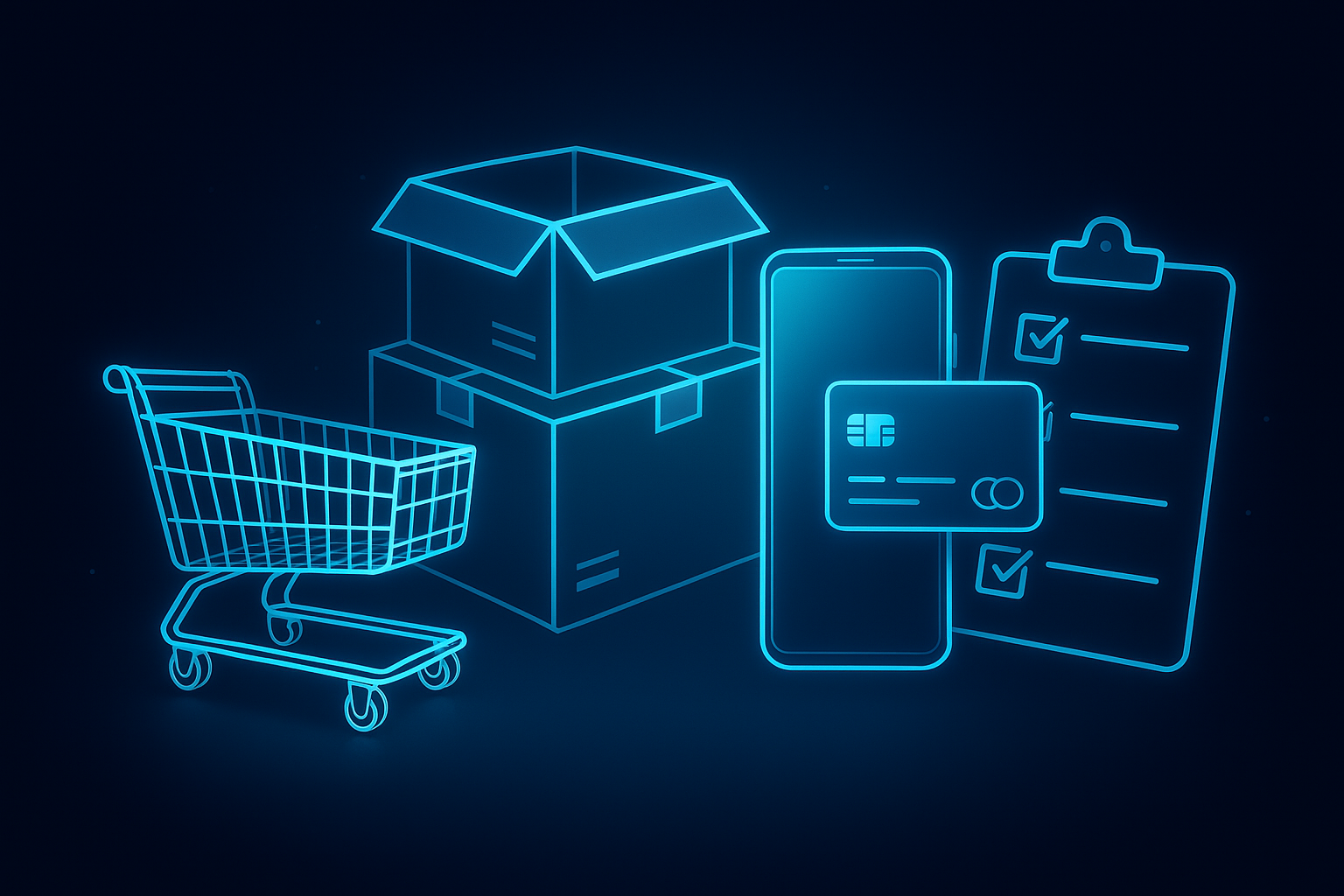

10 Ways to Conduct AI Customer Analytics in 2025
By 2026, 65% of B2B sales organizations will transition from intuition-based to data-driven decision-making. But right now, many businesses are drowning in vast amounts of customer data while starving for actionable insights.
This paradox has created unprecedented demand for AI customer analytics—using artificial intelligence to turn massive data sets into predictive power and personalized experiences.
The global AI analytics market is expected to reach $1.81 trillion by 2030, and those who employ analytics now will be best positioned to drive growth, improve retention, and outperform their competitors.
In this article, we explore 10 practical ways your business can use AI customer analytics to anticipate customer needs, personalize experiences, and build stronger customer relationships in 2025 and beyond.
Key takeaways
- AI customer analytics turns raw data into actionable predictions, helping you meet customer needs before they arise.
- Real-time analytics help you respond instantly to customer behavior, creating personalized interactions that drive loyalty.
- Predictive models enable smarter segmentation, retention strategies, and journey mapping.
- Even one or two AI analytics techniques can drive major improvements in customer understanding and business performance.
What is AI customer analytics?
AI customer analytics uses artificial intelligence—like machine learning, natural language processing, and deep learning—to analyze customer behavior across channels and time.
Unlike traditional tools describing past trends, AI analytics predicts future actions and recommends next steps. While human-led analysis relies on asking the right questions, AI learns from patterns in the data, surfacing valuable insights you may not think to look for.
This shift from reactive to proactive insights helps B2B businesses improve performance, reduce acquisition costs, and build smarter customer journeys. It is why AI analytics is becoming a strategic must-have in modern eCommerce.
The 10 best ways to conduct AI customer analytics in 2025
1. Predictive customer behavior modeling
Predictive behavior modeling looks at what customers did in the past to forecast what they will do next. It analyzes browsing patterns, purchase history, and engagement data to identify who is likely to buy, who might leave, and who could become a long-term customer.
For example, a B2B electronics distributor can spot when institutional clients typically replace or upgrade components. This lets the distributor’s sales team reach out with relevant offers at just the right moment, dramatically boosting conversion rates.
2. Customer segmentation using AI clustering
AI segmentation goes deeper than just grouping customers by industry or size. It uses intelligent algorithms to identify clusters of customers who behave similarly, even when those patterns are not obvious to the human eye. These segments continuously update as new data comes in, creating increasingly precise targeting opportunities.
For instance, a manufacturing supplier might discover a group of clients who browse in specific patterns before making seasonal bulk orders. This would enable the supplier to develop targeted content for these high-value prospects before competitors notice the trend.
3. Personalization engines
Today’s personalization goes far beyond product recommendations. Modern engines customize entire buying experiences based on who the customer is, what they are doing right now, and what context they are in.
In practice, a B2B marketplace might tailor product suggestions, content, search results, and even pricing based on a company's industry, size, and ordering patterns. This creates a buying environment that feels custom-built for each client’s specific needs.
This matters because, according to Forbes, 80% of consumers are more likely to buy from brands that personalize their experience.
4. Detailed analysis of customer sentiments
Advanced language processing now helps businesses understand not just what customers are saying, but also how they feel about it. Modern tools detect emotions, urgency, and specific pain points mentioned in feedback and communications.
For instance, a wholesale distributor can automatically analyze thousands of support conversations to identify recurring issues with products or shipping methods. This allows the distributor to fix problems before they become major sources of frustration, which can help keep customer satisfaction high.
5. AI-enhanced customer journey mapping
AI has transformed journey mapping by spotting patterns across touchpoints that human analysts might miss. These systems pinpoint exactly where customers get stuck, which paths lead to purchases, and how different journeys affect long-term value.
For example, a building materials supplier might discover that contractors who look at technical specs before requesting quotes are 40% more likely to buy. This insight could lead the supplier to enhance its specification materials and redesign its website to encourage this high-value behavior.
6. Next Best Action modeling
Next Best Action systems are like smart assistants for your customer relationships. They evaluate thousands of possible interactions to determine the perfect next step to take with each customer—whether that is sending a specific email, offering a particular discount, or having sales reach out.
As an example, a supplier might use this to decide which product lines to highlight for different customers based on their purchase history, market conditions, and recent website activity. The system continuously improves as it learns which approaches work best.
7. Voice of Customer (VoC) mining with natural language processing (NLP)
Voice of Customer mining uses language processing to extract insights from all the ways customers communicate with you. It analyzes support tickets, reviews, social media, and other text to identify trends and improvement opportunities that might go unnoticed.
For example, an industrial equipment provider analyzing support conversations might discover that clients frequently ask about maintenance scheduling. This could inspire the provider to develop automated maintenance reminders or better training materials, addressing a need customers might not have directly requested.
8. Real-time behavioral analytics
Real-time analytics has evolved from simple tracking to systems that spot meaningful patterns as they happen. These tools watch how users interact with your digital touchpoints, instantly recognizing behaviors that signal confusion, interest, or readiness to purchase.
For instance, a wholesale food distributor might implement real-time analytics that notice when restaurant clients repeatedly search for seasonal ingredients without ordering. This could trigger personalized inventory alerts or special offers to address potential availability concerns.
Companies using real-time analytics typically achieve better business results than those relying on traditional methods. DJUST’s platform, for example, supports this through its flexible cart system and search capabilities, which track and respond to customer actions in the moment.
9. Churn prediction and retention modeling
Modern churn prediction identifies at-risk customers long before they show obvious signs of leaving. These systems evaluate hundreds of factors to pinpoint what contributes to customer defection in your business.
For instance, an office supply company might discover that certain ordering pattern changes—like decreasing frequency while maintaining similar volumes—strongly predict customer loss to competitors. This insight enables targeted retention efforts before customers actively begin looking elsewhere.
DJUST’s unified commerce platform provides the comprehensive data view necessary for effective churn prediction. By tracking customer interactions across touchpoints and analyzing order patterns, businesses can identify early warning signs of potential churn and implement proactive retention strategies.
10. AI-powered attribution modeling
Attribution has evolved beyond simple first- or last-touch models. Today’s systems look at the entire customer journey to understand how each interaction contributes to a sale.
For example, a construction materials supplier might learn that technical webinars do not bring in many direct leads, but they play a key role in convincing customers to make big purchases later. That insight helps justify investing in content that older attribution models might overlook.
Common pitfalls to avoid when using AI for customer insights
AI can unlock powerful customer insights, but without the right approach, even strong tools can fall short. Here are some common mistakes to watch out for:
- Ignoring data quality. AI is only as good as the data it learns from. Make sure your information is clean, consistent, and comprehensive before using advanced analytics.
- Relying too much on automation. AI can spot patterns quickly, but it does not always understand the full context. Human review is still important, especially before making big decisions based on AI suggestions.
- Confusing correlation with causation. Just because two things happen together does not mean one causes the other. Apply critical thinking when evaluating AI-generated insights.
- Not acting on what you learn. Even the best insights are useless if you do not do anything with them. Make sure you have a plan for turning insights into action—and track the results.
- Working without clear goals. Before using AI, define exactly what you want to learn. If your goals are vague, the insights you get may be interesting but not useful.
- Neglecting privacy rules. Laws and growing customer expectations protect individuals’ data. So, always follow privacy regulations and be transparent about how your company is using people’s data.
Where AI customer analytics is heading next
AI analytics is evolving fast. Here are some key trends to watch:
- Hyper-personalization. Analytics will move beyond segments to enable true one-to-one experiences at scale, with everything tailored to individual preferences and behaviors.
- Emotion AI. Advanced systems will understand what customers do and how they feel—analyzing tone, language, or even facial expressions. This helps brands connect with customers more empathetically.
- Predictive commerce. AI will increasingly anticipate needs before customers express them. Systems might automatically suggest or even place orders before customers ask.
- Explainable AI. As systems become more sophisticated, they will get better at explaining their recommendations in human terms, building trust with both users and customers.
- Integrated analytics ecosystems. Instead of juggling multiple tools, businesses will shift to platforms that bring all analytics together in one place. This unified view helps deliver more consistent and effective customer experiences, similar to how AI is revolutionizing order management in B2B commerce.
Work smarter, not harder, with AI analytics and DJUST
AI-powered customer analytics are changing how businesses understand and connect with their customers. In 2025, companies using these tools will have a clear edge in attracting, keeping, and growing customer relationships.
The good news is that you do not need to overhaul your systems to get started. Many companies see results by starting with just one or two high-impact applications and expanding as they prove value.
The most important step is having a solid data foundation. That means pulling all your customer info into one place so you can get a clear, complete view.
DJUST makes this easy. Our unified commerce platform connects with your existing tools and gives you the analytics power you need to compete and grow in today’s market.
Curious what this could look like for your business? Request a DJUST demo today and discover the power of predictive customer intelligence. And for more insights, check out our guide on using eCommerce analytics for growth.





.jpg)